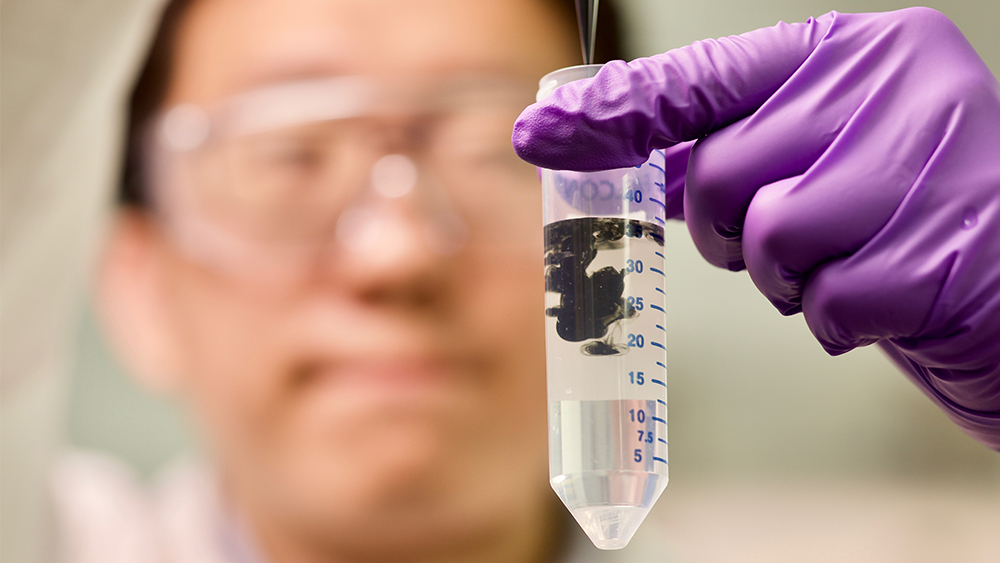Researchers find inexpensive method to protect fragile nanomaterials

In work that could open a floodgate of future applications for a new class of nanomaterials known as MXenes (pronounced “Maxines”), an interdisciplinary team of researchers from Texas A&M University have discovered a simple, inexpensive way to prevent the materials’ rapid degradation.
Two-dimensional MXene nanosheets have promise in applications ranging from energy storage to water purification. However, MXenes have an Achilles’ heel: they rapidly degrade when kept in the open.
According to the Texas A&M team, the solution to this problem involves exposing MXenes to anything in a family of compounds best represented by a natural dietary supplement such as vitamin C.
“With these findings, shelf-stable MXenes become possible and engineering-grade MXene-based materials can become a practical reality,” the researchers wrote in a paper for the upcoming issue of the online journal Matter. This work was supported by the National Science Foundation.
Discovered in 2011 by a team at Drexel University, MXenes are sheets of materials only a few atoms thick that are mostly composed of layers of metals like titanium interleaved by carbon and/or nitrogen.
Due to their nanothickness and the variety of elements they can be composed of (other nanomaterials like graphene contain only carbon), “these materials tend to have really interesting properties, like high electrical conductivity and high catalytic activity,” said Micah Green, an associate professor who led the work and has joint appointments in the Artie McFerrin Department of Chemical Engineering and the Department of Materials Science and Engineering at Texas A&M.
As a result of those properties, MXenes have generated a great deal of interest and enthusiasm in the research community with potential applications in everything from batteries to electronic sensors.
“But there has been one problem lurking in the background,” said Green. MXenes degrade, or oxidize, quickly. “They fall apart and stop being nanosheets. This happens on the order of days.”
Although other researchers have found that techniques like drying or freezing MXenes can delay their degradation, “they’re still not going to last for years,” he said. “And no one wants a material that doesn’t have a long shelf life.”
Texas A&M tackled the problem through an interdisciplinary team of experts in nanomaterials, ceramics and polymers.
The other faculty members involved in the work are Miladin Radovic, professor in the Department of Materials Science and Engineering, and Jodie Lutkenhaus, associate professor in the Department of Materials Science and Engineering and the Department of Chemical Engineering.

